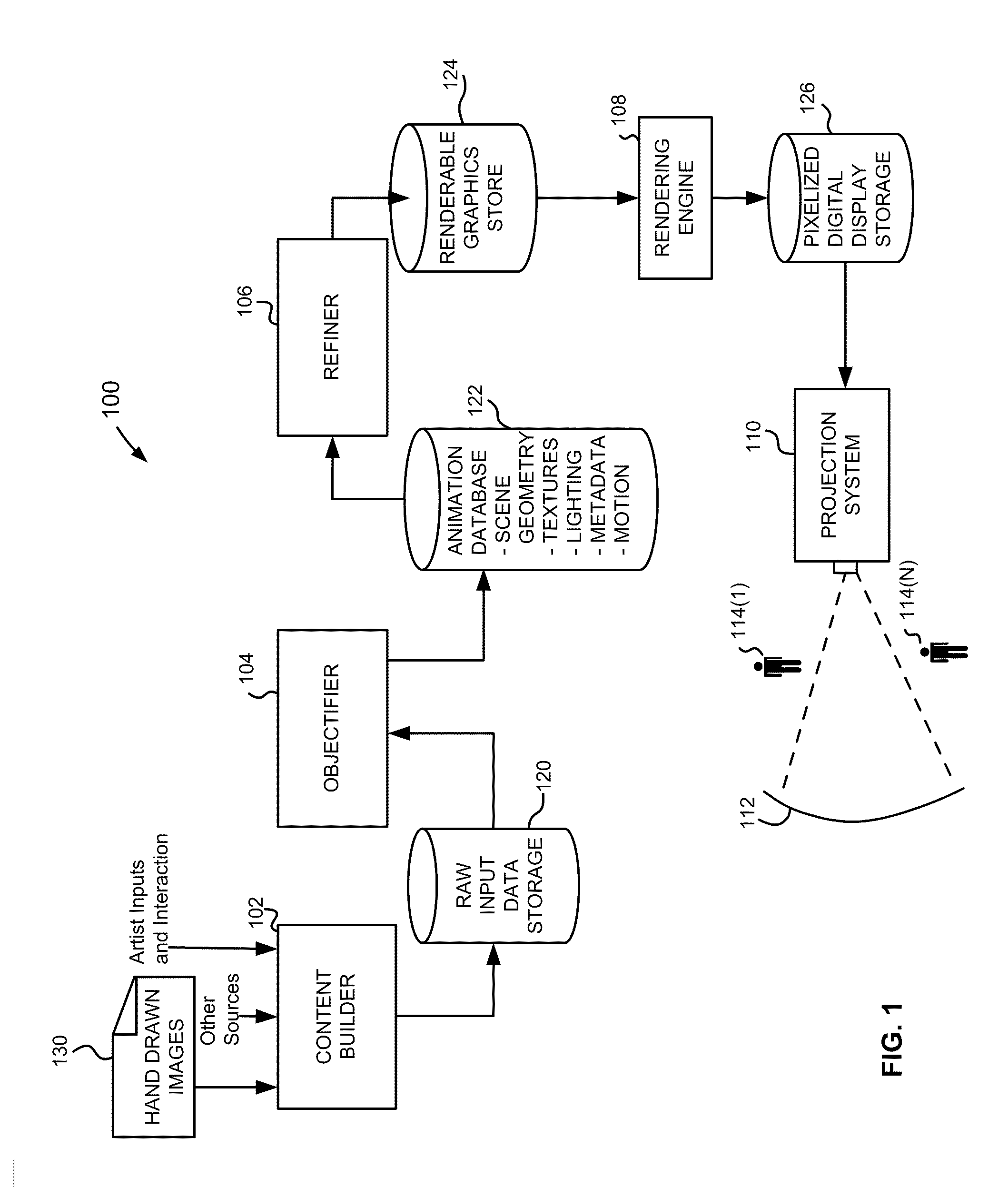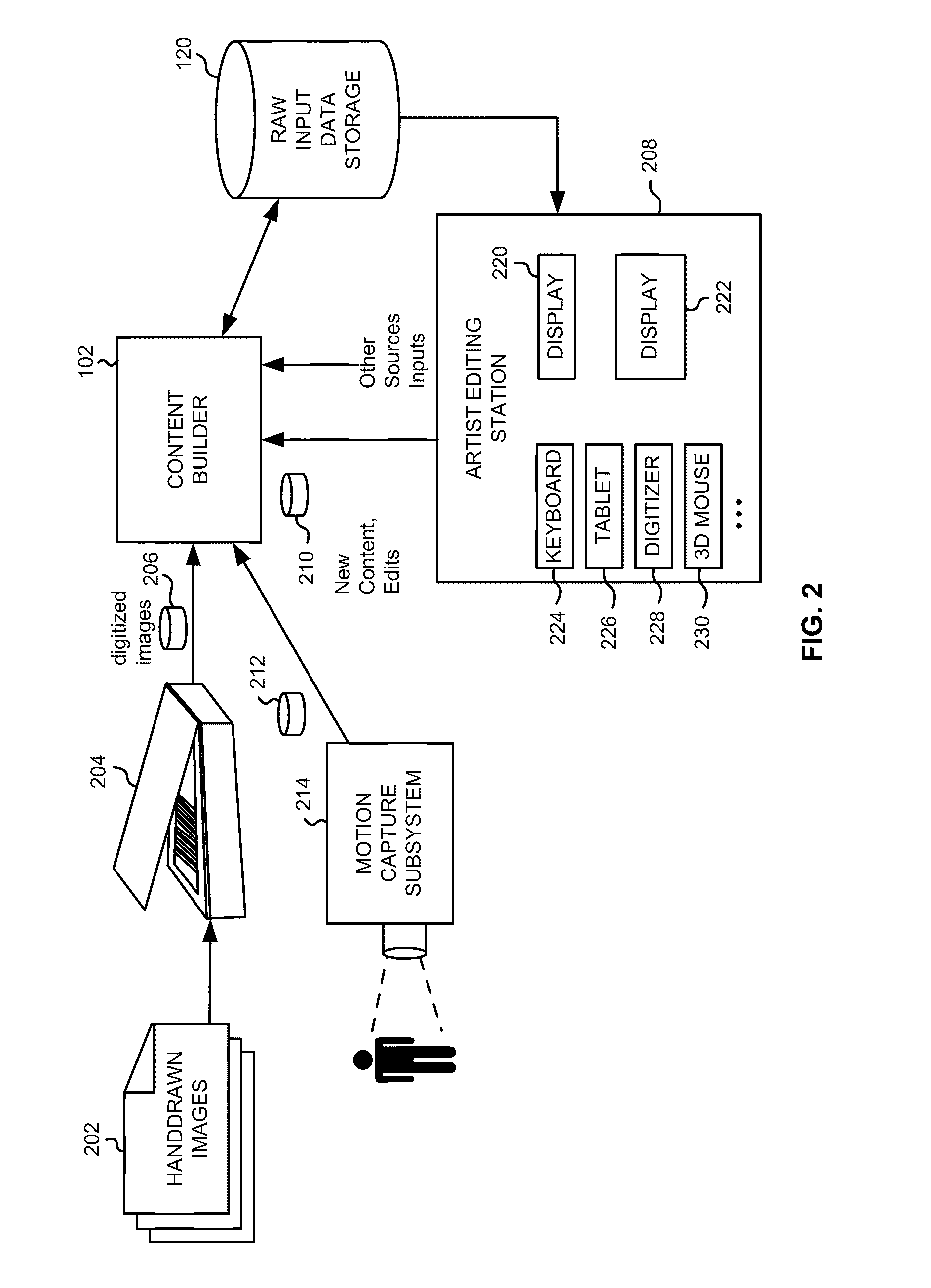Vectorization of line drawings using global topology and storing in hybrid form
- Summary
- Abstract
- Description
- Claims
- Application Information
AI Technical Summary
Benefits of technology
Problems solved by technology
Method used
Image
Examples
first example process
[0072]For an optimal preservation of all aspects of an input drawing, the digitization and vectorization should not require pre-processing (e.g., smoothing) of an image. Smoothing is not required in this approach. The input can be is a standard digital scan of a line drawing at an arbitrary (i.e., the desired) resolution. Then the image is processed in three phases in this first example process: (1) low level stroke analysis by particle clustering, (2) high-level, topological analysis of the drawing and stroke properties, and (3) storing the results as a hybrid representation.
[0073]In the first phase, an initial stroke analysis is represented as a self-organizing particle clustering process operated by the vectorizer using information stored as to each such particle. In a specific implementation, all foreground pixels in the scan are identified using a predetermined color model of the paper background. Each foreground pixels gets assigned a particle, with mass, color, and further pr...
second example process
[0077]In a second example process, the image is processed in what can be described as four phases: (1) low level stroke analysis by particle clustering, (2) high-level, topological analysis of the drawing and stroke properties, (3) reconstruction of junctions and centerlines by reverse drawing, and (4) storing the results as a hybrid representation.
[0078]This process provides for a bottom-up approach to generate the hybrid stroke representation from a raster image of a line drawing. In each step, beginning with simply a raster image (an array of pixel color values), the process involves extracting higher level information from the available data, until the full (or desired) representation has been created.
[0079]First, a cluster graph is created. Initially, the only information available is the collection of pixel representatives, Gj. Direct vectorization from unprocessed pixels often leads to inaccurate center line estimates in ambiguous regions, where strokes are very close to each...
PUM
 Login to View More
Login to View More Abstract
Description
Claims
Application Information
 Login to View More
Login to View More - R&D
- Intellectual Property
- Life Sciences
- Materials
- Tech Scout
- Unparalleled Data Quality
- Higher Quality Content
- 60% Fewer Hallucinations
Browse by: Latest US Patents, China's latest patents, Technical Efficacy Thesaurus, Application Domain, Technology Topic, Popular Technical Reports.
© 2025 PatSnap. All rights reserved.Legal|Privacy policy|Modern Slavery Act Transparency Statement|Sitemap|About US| Contact US: help@patsnap.com



